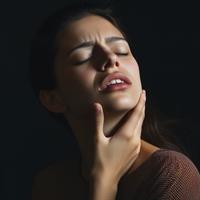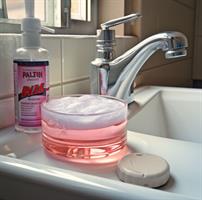Do you ever wake up with a sore jaw or a headache? Or perhaps your partner has complained about the strange grinding noises you make during the night? You may be experiencing bruxism, a condition characterized by teeth grinding, clenching, or gnashing.
The effects of this seemingly harmless habit can be far-reaching, potentially leading to dental problems, jaw disorders, and even changes in facial appearance.
Bruxism is classified into two types: awake bruxism and sleep bruxism. Each type has distinct symptoms and causes, which will be discussed in this article. By understanding the types and symptoms of bruxism, you can take steps to reduce teeth grinding and protect your oral health.
Key Takeaways
-
Understanding bruxism involves recognizing types and symptoms, causes, treatments, and the harmful effects of teeth grinding.
-
Risk factors include stress, anxiety, sleep disorders & lifestyle habits. Treatment options include night guards & medications.
-
Preventative measures such as reducing stress & maintaining oral hygiene can help reduce risk for developing bruxism.
Understanding Bruxism: Types and Symptoms
Although bruxism is often thought of as a simple habit, it can be quite harmful to your dental health. Awake bruxism and sleep bruxism are the two main types, both involving involuntary teeth grinding or clenching, but with unique characteristics and indicators. Understanding the differences between these types and recognizing their symptoms can help in seeking appropriate treatment.
Common symptoms of both awake and sleep bruxism include tooth wear, tooth pain, and sore jaw muscles. The causes and triggers for each type, however, can differ. Therefore, pinpointing and addressing the root factors that contribute to teeth grinding is necessary.
Awake Bruxism
Awake bruxism is the grinding or clenching of teeth and jaw that occurs during waking hours, which can put stress on the jaw joints. It is often linked to stress, anxiety, anger, or tension, and may even serve as a coping mechanism or habit during emotionally charged situations. People who grind their teeth may experience symptoms of awake bruxism, including audible teeth grinding or clenching, increased tooth pain or sensitivity, and teeth that are flattened, fractured, chipped, or loose.
The distinction between awake bruxism and sleep bruxism lies in their triggers and associated symptoms. Awake bruxism is connected to emotional factors and facial pain symptoms, whereas sleep bruxism involves involuntary teeth grinding during sleep. When individuals identify the psychological factors associated with awake bruxism, they can tackle the root causes and mitigate the damaging effects of teeth grinding.
Sleep Bruxism
Sleep bruxism is a very common phenomenon. It involves an involuntary grinding or clenching of teeth while one is sleeping. This type of bruxism is more common in children and young adults, and its prevalence varies across different age groups. Sleep bruxism is associated with specific sleep stages, such as rapid eye movement (REM) sleep, and may be linked to sleep disorders or other underlying health issues.
Symptoms of sleep bruxism include:
-
Grinding or clenching of teeth
-
Discomfort of the jaw muscles
-
Headaches
-
Sensitivity of the teeth
Once individuals grasp the symptoms and potential triggers of sleep bruxism, they can then strategize to manage their sleep patterns and reduce the strain of teeth grinding on their dental health.
The Harmful Effects of Teeth Grinding
Prolonged teeth grinding can lead to a range of issues, including:
-
Dental problems such as tooth fracture, tooth wear patterns, tooth sensitivity or pain, jaw dysfunction, chronic pain, infection, tooth loss, and tooth decay
-
Jaw disorders
-
Headaches
-
Alterations in facial appearance
-
Damaged teeth
-
Jaw pain or fatigue
It is important to stop teeth grinding to prevent complications such as loose teeth and to avoid teeth grinding harmful effects.
Realizing the damaging effects of teeth grinding underscores the need for seeking treatment. Addressing bruxism early on can help prevent further damage to the teeth, jaw, and overall facial structure, ultimately preserving one’s dental health and well-being.
Diagnosing Bruxism
Diagnosing bruxism involves a comprehensive evaluation of dental health, sleep patterns, and potential underlying causes. A thorough dental examination can reveal signs of tooth wear and damage, while an assessment of sleep patterns can provide valuable information about the timing and frequency of teeth grinding during sleep. Moreover, a patient’s medical history can offer insight into their overall health, any underlying medical conditions, medications they are taking, and potential risk factors for bruxism.
Healthcare providers can accurately diagnose sleep bruxism and recommend suitable treatment options through a careful examination of dental health, sleep patterns, and medical history. Once sleep bruxism diagnosed, early intervention can help prevent further damage to the teeth and jaw and improve the individual’s quality of life.
Risk Factors and Causes
Various risk factors are associated with bruxism, including:
-
Stress
-
Anxiety
-
Sleep disorders
-
Genetic predisposition
-
Certain lifestyle habits
Anxiety disorders, in particular, can increase muscular tension and somatic anxiety, leading to teeth grinding. Sleep-related movement disorders, obstructive sleep apnea, and sleep arousal disorders have also been linked to an increased risk of bruxism.
The development of a personalized treatment plan requires a clear understanding of the risk factors and causes of bruxism. Addressing the underlying causes and managing these risk factors can help reduce teeth grinding and protect one’s dental health.
Treatment Options for Bruxism
Treatment options for bruxism include:
-
Night guards, available in various types, can help protect the teeth and reduce damage caused by bruxism.
-
Stress management techniques, such as cognitive-behavioral therapy, relaxation exercises, and improving sleep hygiene, can help alleviate bruxism symptoms.
-
Medications, including muscle relaxants, antidepressants, and anticonvulsants, may also be prescribed to alter brain chemicals and reduce bruxism, but should be discussed with a doctor due to potential side effects.
Individuals can manage their bruxism symptoms and safeguard their dental health effectively by investigating various treatment options and addressing the underlying causes.
Night Guards
Night guards, such as dental splints and mandibular advancement devices, can help protect teeth and reduce damage caused by bruxism. These devices create a protective barrier between the upper and lower teeth, preventing them from grinding or clenching together during sleep. This helps to reduce the symptoms of bruxism, such as tooth damage, jaw pain, and headaches.
Various types of night guards are available for bruxism treatment, including:
-
Soft night guards
-
Hybrid night guards
-
Hard night guards
-
Ultra-thin guards
-
Custom-made mouth guards
These devices are typically made from hard acrylic, polyurethane, or a soft rubber-like material and can be fitted by a dentist to ensure a comfortable and effective fit.
Stress Management Techniques
Stress management techniques can be instrumental in easing bruxism symptoms. Cognitive-behavioral therapy (CBT) is a psychological approach that assists individuals in recognizing patterns in their thoughts, emotions, and behaviors. CBT can help individuals identify triggers and learn coping mechanisms to reduce teeth grinding.
It may include relaxation techniques, counseling, sleep hygiene education, and lifestyle changes to help manage stress and anxiety, which are common triggers for bruxism.
Improving sleep hygiene can contribute to managing bruxism symptoms by reducing stress and promoting relaxation.
Here are some tips to help improve sleep hygiene and reduce bruxism symptoms:
-
Maintain a consistent bedtime
-
Avoid stimulants before bed, such as caffeine and nicotine
-
Practice relaxation techniques like meditation or deep breathing before bed
-
Create a comfortable sleep environment, with a cool and dark room
-
Limit exposure to electronic devices before bed
-
Use a mouthguard during sleep to protect the teeth and reduce the impact of bruxism.
By following these tips, individuals may experience a decrease in bruxism symptoms and improve their overall sleep quality.
Medications
In some cases, medications may be prescribed to treat bruxism. Muscle relaxants, antidepressants, and anticonvulsants can be utilized to modify brain chemicals and abate bruxism. However, before starting any medication, consultation with a doctor regarding potential side effects is vital. Side effects of medications used to treat bruxism may include drowsiness, dry mouth, nausea, and dizziness.
The results of medication treatment for bruxism may vary among individuals. Some research has indicated that patients may experience alleviation from bruxism symptoms for up to 1-5 months after beginning medication therapy. One should bear in mind that individual reactions to medication may differ and warrant close monitoring by a healthcare professional.
Bruxism in Children
Bruxism is common in children, with studies indicating that it may range from 6% to nearly 50%. Most children eventually outgrow the habit of teeth grinding, but for those with persistent symptoms, night guards may be recommended as a treatment option.
The possible causes of bruxism in children include:
-
Misalignment of baby teeth
-
Underlying illnesses
-
Nutritional deficiencies
-
Allergies
-
Endocrine disorders
-
Psychological factors such as anxiety and stress
If parents suspect their child has bruxism, it is advised to consult with a healthcare provider or dentist. Regular dental check-ups can help monitor the child’s dental health and identify any signs of tooth wear or damage caused by teeth grinding. Early intervention for bruxism in children can prevent additional damage to their teeth and jaw, securing a healthy oral future.
Preventative Measures and Lifestyle Changes
Adopting preventative measures and making lifestyle modifications can reduce the risk of developing bruxism. Reducing stress, avoiding caffeine and alcohol, and maintaining good oral hygiene can contribute to better dental health and a lower likelihood of teeth grinding. Regular brushing, flossing, and dental check-ups can help maintain the health of the teeth and gums, decreasing their vulnerability to the adverse effects of bruxism.
Dietary habits can also play a role in preventing bruxism. A suitable bruxism diet, high in magnesium and tryptophan and low in caffeine, is recommended. In addition, avoiding hard foods and practicing good oral hygiene can further reduce the risk of developing bruxism and protect one’s dental health.
Coping Strategies for Bruxism-Related Pain
Coping strategies for bruxism-related pain include avoiding hard foods, using hot or cold compresses, and performing facial exercises to alleviate discomfort and promote relaxation.
Abstaining from hard foods can assist in alleviating tension on the jaw muscles and diminishing the likelihood of additional harm to the teeth. Utilizing hot or cold compresses can assist in diminishing muscle tension and alleviating pain, while cold compresses can be beneficial in reducing inflammation and swelling.
Undertaking facial exercises can aid in decreasing muscle tension and encouraging relaxation. Additionally, they can assist in enhancing posture and diminishing the probability of further harm to the teeth. Individuals can manage bruxism-related pain effectively and safeguard their dental health by implementing these coping strategies.
Summary
In conclusion, bruxism is a common condition involving teeth grinding and clenching, with two main types: awake bruxism and sleep bruxism. Both types can lead to various dental problems, jaw disorders, headaches, and changes in facial appearance if left untreated. Early diagnosis and treatment, including night guards, stress management techniques, and medications, can help manage bruxism symptoms and protect dental health.
By understanding the types, symptoms, and risk factors of bruxism, as well as implementing preventative measures and lifestyle changes, individuals can take control of their dental health and minimize the impact of teeth grinding. Don’t let bruxism take a toll on your smile – take action today and protect your pearly whites.
Frequently Asked Questions
What is the main cause of bruxism?
The main cause of bruxism is often linked to too much stress and certain personality types, such as those with nervous tension, aggression, hurry, or competitiveness.
How do you get rid of bruxism?
To get rid of bruxism, make lifestyle changes to reduce stress and practice good sleep habits. Additionally, try jaw exercises and massage, mouth guards and splints, muscle relaxants, Botox® Injections, and treatments for associated disorders. Lastly, ensure regular dental exams.
What are 3 common causes of bruxism?
Common causes of bruxism include psychosocial stress, genetics, consumption of alcohol or caffeine, smoking, and certain medications.
Can bruxism be cured?
Although there is no cure to completely stop bruxism, treatment and home care tips can reduce its frequency, decrease its impact, and relieve symptoms.
What does grinding your teeth indicate?
Grinding your teeth can be indicative of a variety of underlying causes, including stress, anxiety, tension, sleep apnea, hyperactivity and certain mental health and medical disorders. Treatment may involve bite splints, repair of any damage caused to the teeth, and stress management therapy.




